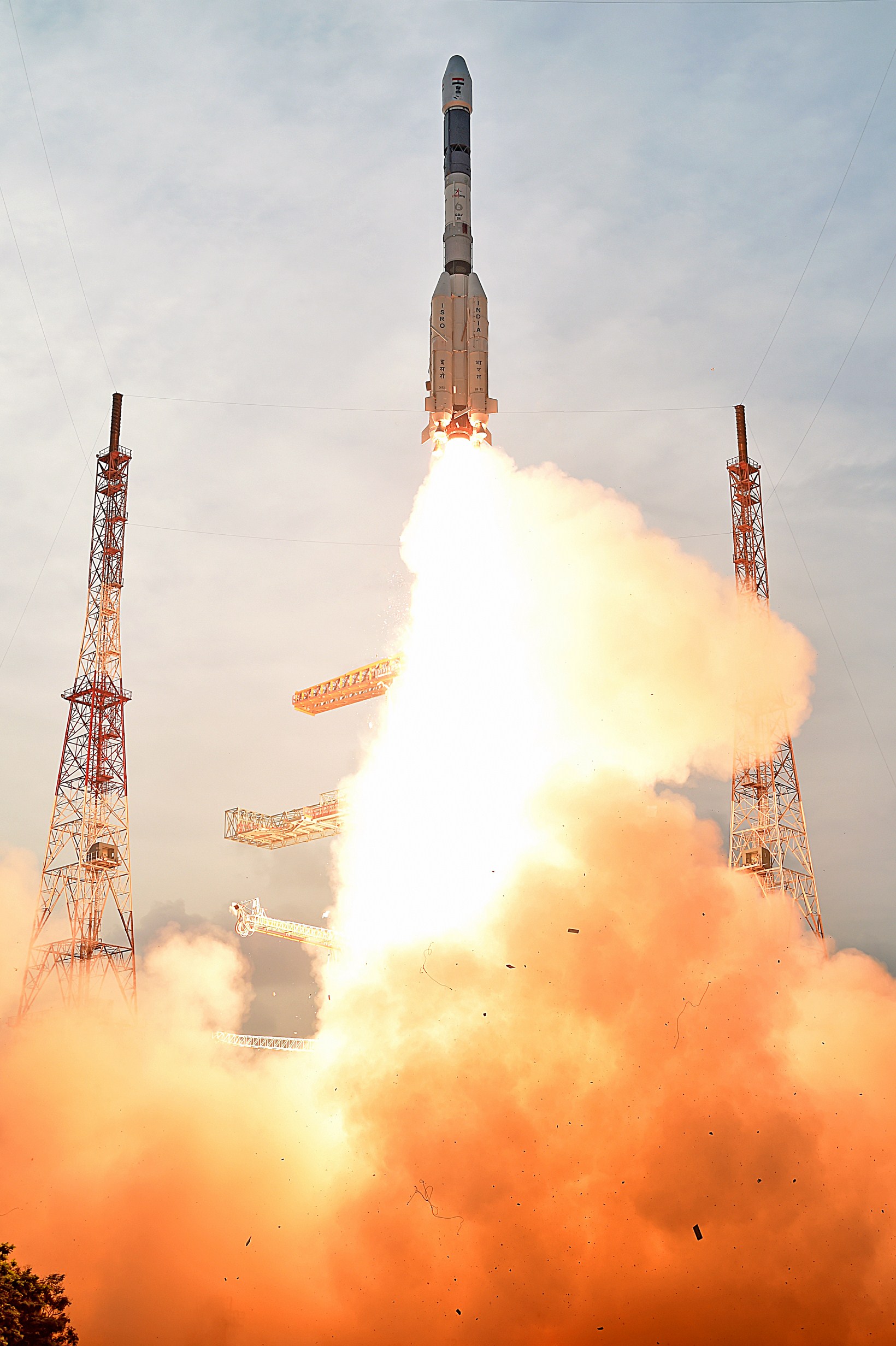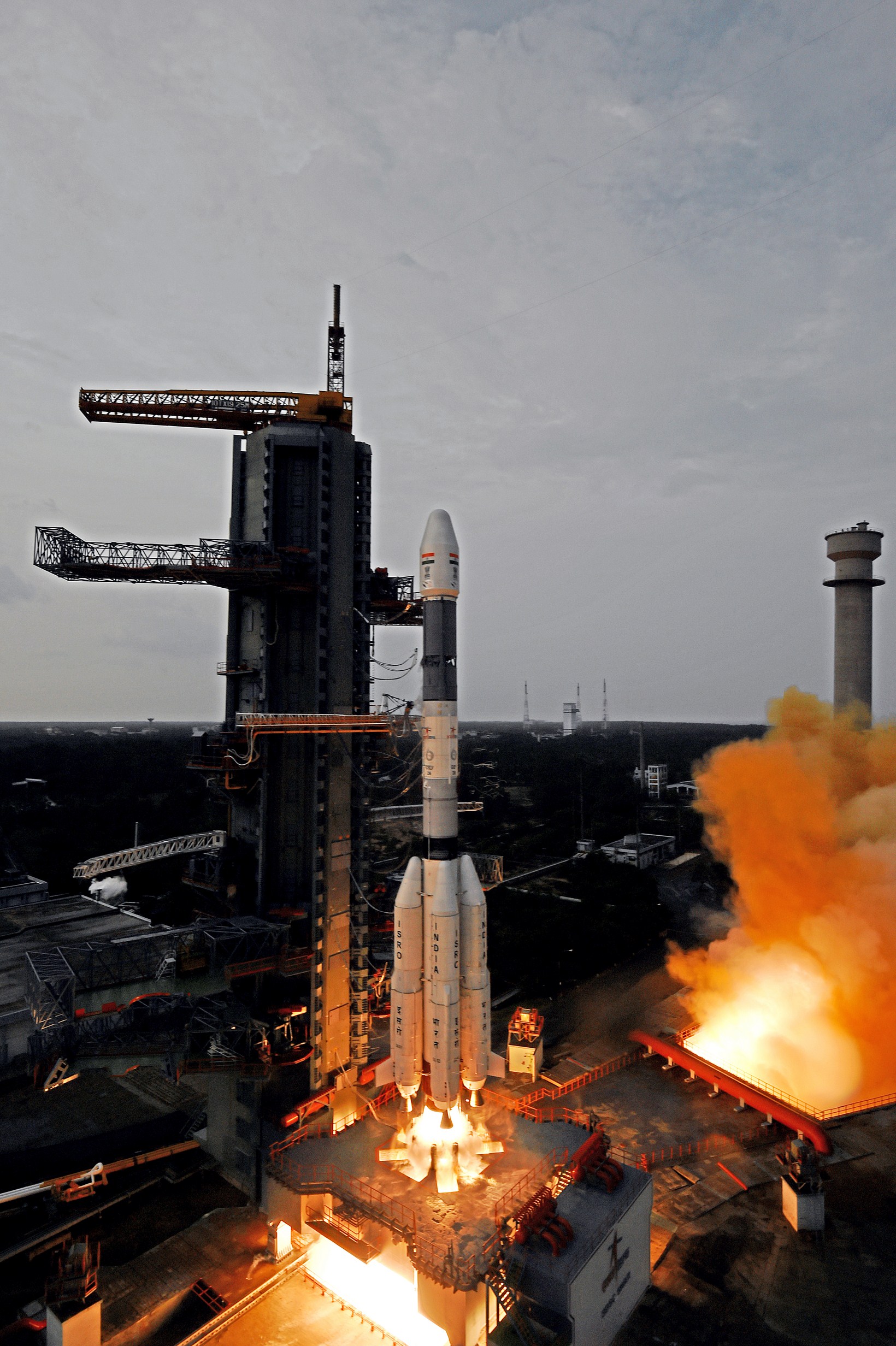 The latest communication satellite was injected
into a Geosynchronous Transfer Orbit (GTO), which was very close to the intended one. This was the fifth developmental flight of GSLV
and the third to carry the indigenous CUS. GSLV-D6 was intended to further test and qualify the CUS developed by Indian Space Research
Organisation (ISRO). The latest communication satellite was injected
into a Geosynchronous Transfer Orbit (GTO), which was very close to the intended one. This was the fifth developmental flight of GSLV
and the third to carry the indigenous CUS. GSLV-D6 was intended to further test and qualify the CUS developed by Indian Space Research
Organisation (ISRO).
In its oval shaped GTO, the GSAT-6 satellite is now orbiting the Earth with a perigee (nearest point to Earth) of 168 km and an apogee (farthest point to Earth)
of 35,939 km with an orbital inclination of 20.01 deg with respect to the equator.
After a smooth 29 hour countdown, the 416 tonne, 49 m tall GSLV-D6 carrying the 2117 kg GSAT-6, lifted off at 16:52 hrs.
At about 17 minutes after the lift-off, GSAT-6 was successfully placed in GTO.
At 4.8 seconds before the countdown reached zero, the four liquid propellant strap-on stages of GSLV-D6, each carrying 42
tonne of liquid propellants, were ignited. At count zero and after confirming the normal performance of all the four strap-on motors,
the mammoth 139 tonne solid propellant first stage core motor was ignited and GSLV lifted off. The major phases of the flight included
the core motor burn-out, strap on burn-out, ignition of the second stage, separation of the core motor together with strap-ons,
payload fairing separation, second stage separation, CUS ignition and its timely shut down after satisfactory performance.
Following this, GSAT-6 separated from CUS at about 17 minutes after launch.
 Soon after its injection into GTO, the two solar arrays of GSAT-6 were automatically deployed and the Master Control Facility (MCF) at Hassan in Karnataka took control of GSAT-6. Soon after its injection into GTO, the two solar arrays of GSAT-6 were automatically deployed and the Master Control Facility (MCF) at Hassan in Karnataka took control of GSAT-6.
In the coming days, GSAT-6's orbit will be raised from its present GTO to the final circular Geostationary Orbit (GSO) by firing the satellite's
Liquid Apogee Motor (LAM) in stages. The satellite will be commissioned into service after the completion of orbit raising operations, deployment
of its 6 m wide sieve shaped unfurlable antenna, the satellite’s positioning in its designated orbital slot of 83 degree East longitude in the GSO
and in-orbit testing of its communication payloads.
President Pranab Mukherjee and Prime Minister Narendra Modi congratulated the ISRO scientists after the successful launch. The President in his message to
ISRO Chairman AS Kiran Kumar said, "Please accept my hearty congratulations to you and your entire team at the Indian Space Research Organisation (ISRO)
for the successful launch of GSLV-D6 carrying GSAT-6, an advanced communication satellite. Kindly convey my greetings to the members of your team
of scientists, engineers, technologists and all others associated with this great mission. Our nation is grateful for their hard work
and proud of their accomplishments.” Prime Minister Modi's message read: "Another day and another phenomenal accomplishment by our scientists.
Congratulations ISRO for the successful launch of GSAT-6,"
Notably, the latest launch of GSLV underscores the success of ISRO in mastering the highly complex cryogenic rocket propulsion technology.
|